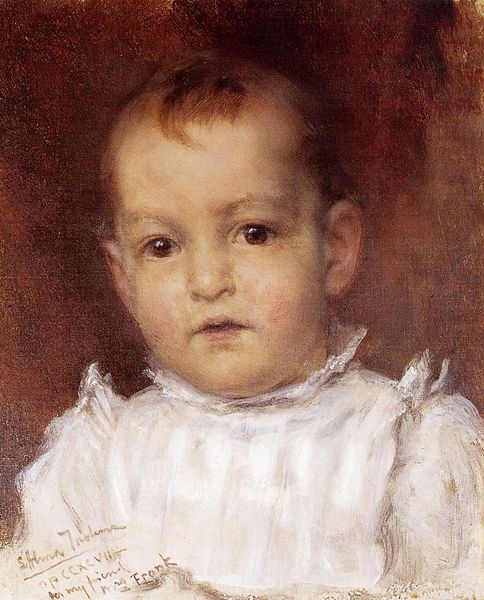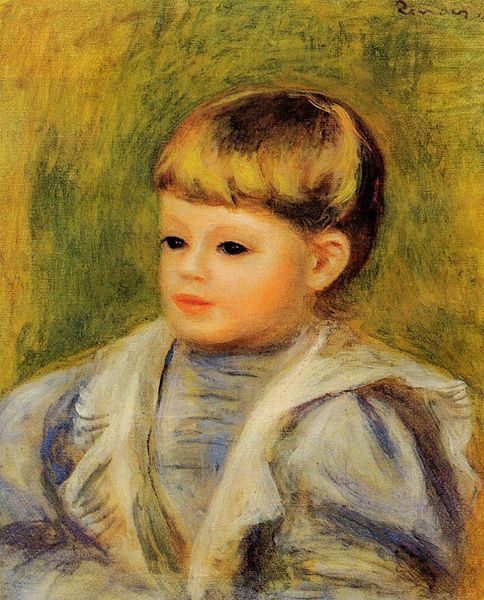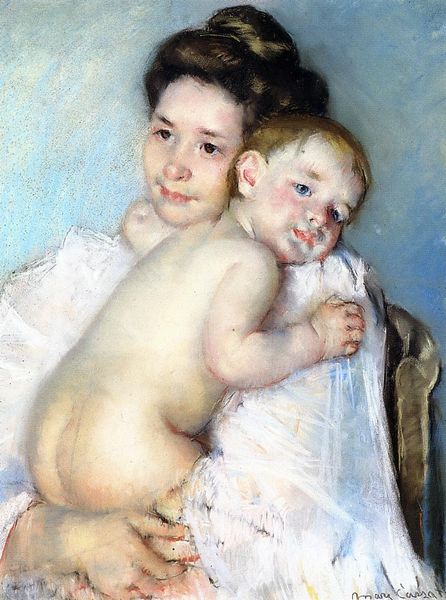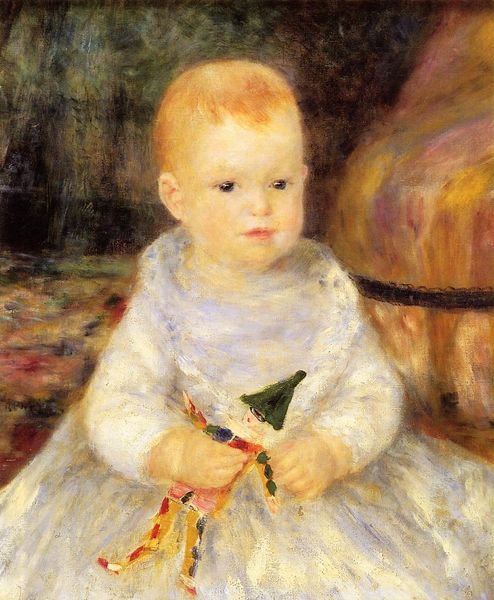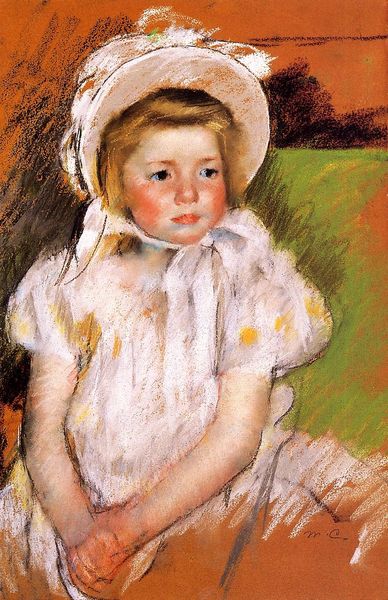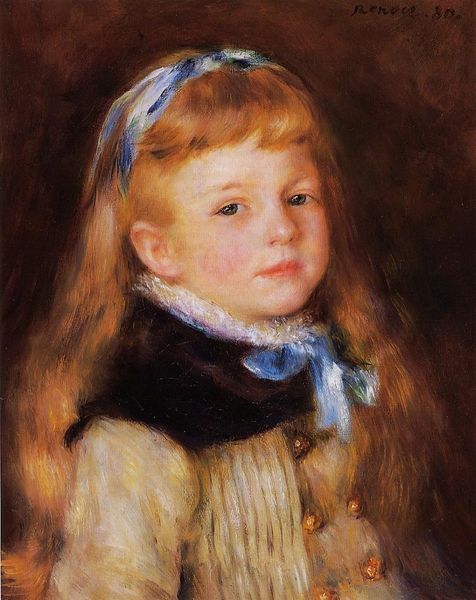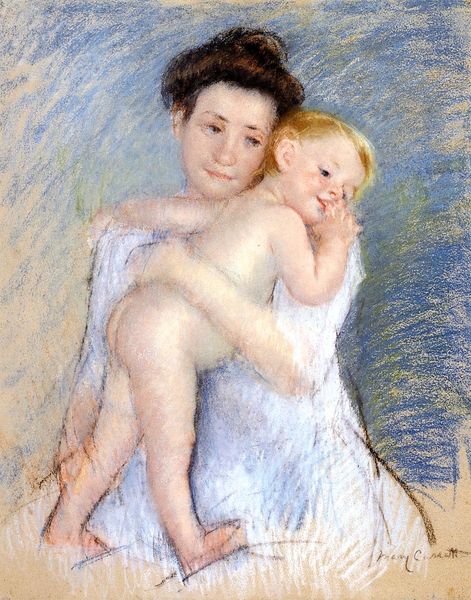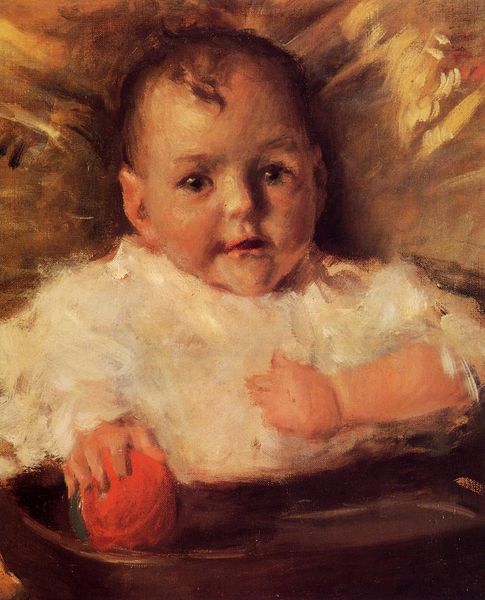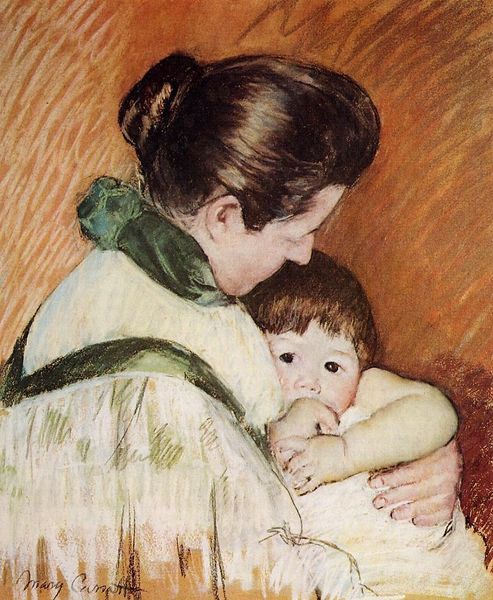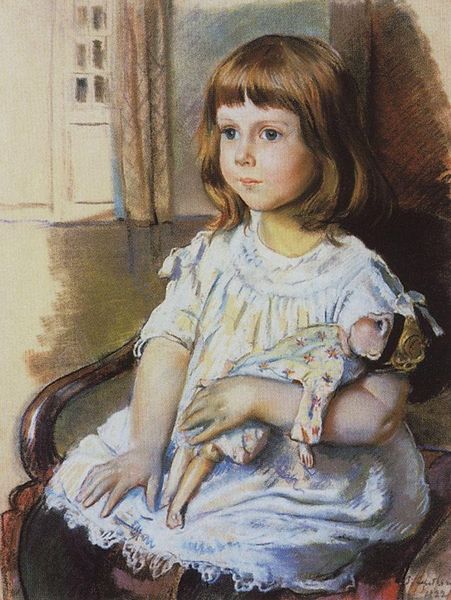
Dimensions: 60.96 x 45.72 cm
Copyright: Public domain
Curator: John Singer Sargent painted this portrait, “Marian (Madge) Roller,” in 1902. It's currently held in a private collection. Editor: My initial impression is of stillness and quiet contemplation, almost melancholy. The muted palette of predominantly whites and browns, applied with visible brushstrokes, gives it an ethereal quality. Curator: Considering Sargent’s background and artistic circle, the piece needs to be situated in the broader context of the American expatriate community in Europe. The social rituals of portraiture in that era, especially for women and children, reinforced particular ideals of beauty, domesticity, and class. Editor: Yes, but there's something raw here as well. Notice how Sargent hasn’t smoothed over the details; we see the energetic, almost hasty, application of paint. I'm curious about the materials used, the oil paint itself. Its texture and application become central. Where did Sargent source his paints? Was there a burgeoning industry catering to artists like him at this time? How might the industrial production of art materials have impacted artistic styles, giving someone like Sargent increased availability? Curator: And how are children of her era often styled as miniature adults, carefully groomed and dressed to mirror adult social expectations. She’s cradling what appears to be a doll in similar colors and fabrics; we can ask what kinds of labor were involved in its making. Editor: What do you make of the doll? It’s like a double portrait within a portrait—another layer of constructed identity, or a simulacrum that complicates the idea of authenticity and being for women and girls. How do those constructions uphold—or even undermine—power? The portrait then feels a little defiant, a challenge to the traditional roles. Curator: It offers an interesting tension. Perhaps Sargent isn’t just passively reflecting societal norms, but actively questioning them. The quick brushwork suggests less the objective capturing of Madge Roller and more about revealing inner sentiments regarding her and the historical situation around her. Editor: So, it is a glimpse into the complexities of girlhood and identity—using Sargent’s tools of color and the cultural implications of dress. The materiality offers an insight into process and production in an industrial context while the girl and her doll introduce avenues for discussions about identity and being. Curator: Indeed. Focusing on the artwork in front of us shows so many aspects: from the technical application of paint, all the way to questioning our received ideas about femininity and societal expectations.
Comments
No comments
Be the first to comment and join the conversation on the ultimate creative platform.



